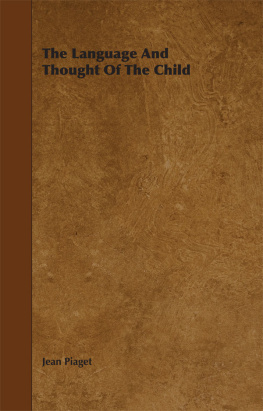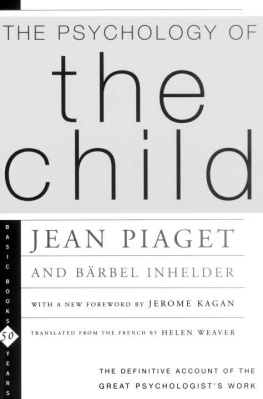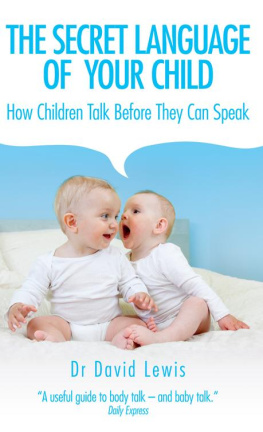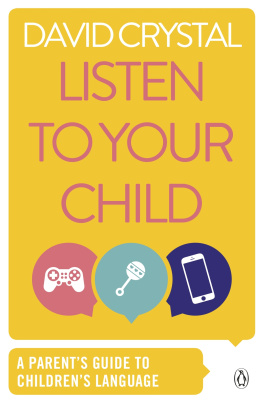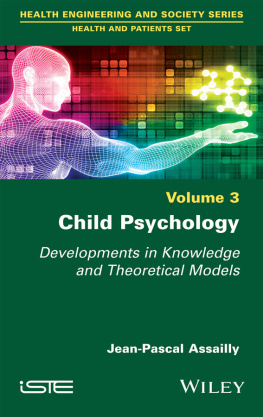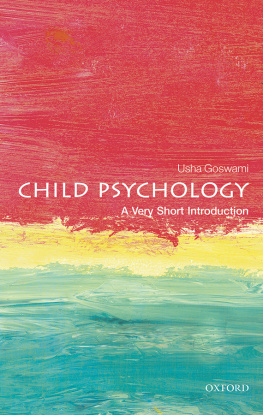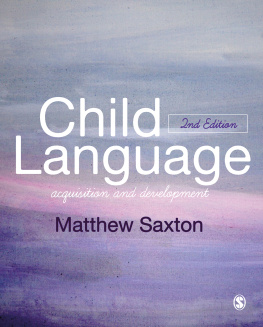The
Language and Thought
of the Child
By
JEAN PIAGET
Professor at the University of Neuchtel
and at the Institut J. J. Rousseau, Geneva
Preface by
PROFESSOR E. CLAPARDE
NEW YORK
HARCOURT, BRACE & COMPANY, INC.
LONDON: KEGAN PAUL, TRENCH, TRUBNER & CO., LTD.
1926
Translated by
MARJORIE WARDEN
CONTENTS
PREFACE
The Importance of this remarkable work deserves to be doubly emphasized, for its novelty consists both in the results obtained and in the method by which they have been reached.
How does the child think? How does he speak? What are the characteristics of his judgment and of his reasoning? For half a century the answer has been sought to these questions which are those which we meet with at the very threshold of child psychology. If philosophers and biologists have bent their interest upon the soul of the child, it is because of the initial surprise they experienced at his logic and speech. In proof of this, we need only recall the words of Taine, of Darwin and of Egger, which are among the first recorded in the science of child logic.
I cannot give a list here of all the works that have appeared since that periodthose of Preyer and of Sully, of P. Lombroso and of Ament, of Binet, of Stern, of Cramaussel and many othersin order to estimate the contribution made to the subject by Jean Piaget. I shall try, however, to state roughly and approximately the special characteristics of his work, so as to indicate wherein consists the novelty of the studies which this volume inaugurates.
Up till now such enquiries as have been made into the intelligence and language of the child have been in the main analytic. All the different forms which reasoning and abstraction, the acquisition and formation of words and phrases may take in the child have been described, and a detailed and certainly serviceable catalogue has been made of the mistakes, errors and confusions of this undeveloped mentality, and of the accidents and deformities of the language which expresses it.
But this labour does not seem to have taught the psychologist exactly what he wanted to know, viz. why the child thinks and expresses himself in a certain manner; why his curiosity is so easily satisfied with any answer one may give or which he may give himself (testifying to that nimportequisme which Binet considered one of the chief characteristics of imbecile mentality); why he affirms and believes things so manifestly contrary to fact; whence comes his peculiar verbalism; and how and by what steps this incoherence is gradually superseded by the logic of adult thought. In a word, contemporary research has stated the problem clearly but has failed to give us the key for its solution. To the psychologist the mind of the child still gives an impression of appalling chaos. As M. Cramaussel once truly remarked: Thought in a child is like a net-work of tangled threads, which may break at any moment if one tries to disentangle them.
Explanations have naturally been forthcoming to account for such striking facts. The weakness, the debility of the childs brain have been cited. But, I would ask, does this tell us anything? The blame has also been laid on the insufficiency of the experience acquired, on the lack of skill of the senses, on a too limited contingent of associations, on the accidents of imitation.... True as they may be, however, these statements lead us nowhere.
After all, the error has been, if I am not mistaken, that in examining child thought we have applied to it the mould and pattern of the adult mind; we have considered it from the point of view of the logician rather than of the psychologist. This method, excellent perhaps for establishing our first inventory, has yielded all it can yield, and ends only in a blind alley. It enables us to straighten out the skein but it does not teach us how to disentangle the threads.
M. Jean Piagets studies offer us a completely new version of the childs mind.
M. Piaget is lucky enough to be still young. He was initiated into psychology at a time when the superficial associationism which had more or less intoxicated his seniors thirty or forty years back was dead and buried, and when vistas full of promise were opening out before our science. For James, Flournoy and Dewey it was the dynamic and pragmatic tendency that counted; for Freud, psycho-analysis; for Durkheim (no matter whether his doctrine was sound or not) the recognition of the rle played by social life in the formation of the individual mind; for Hall, Groos, Binet and the rest, genetic psychology propped up by a biological conception of the child.
By a stroke of genius, M. Piaget having assimilated these new theories, or rather having extracted the good from each, has made them all converge on to an interpretation of the childs mentality. He has kindled a light which will help to disperse much of the obscurity which formerly baffled the student of child logic,
Do you know the little problem which consists in making four equal triangles with six matches? At first, while one thinks of it on the flat, it appears, and quite rightly so, to be insoluble; but as soon as one thinks of solving it in three-dimensional space, the difficulty vanishes. I hope I do not misrepresent M. Piagets ideas in using this simple and somewhat crude example to illustrate the nature of his contributions to child psychology.
Up till now we were as helpless in face of the problem presented by child mentality as before a puzzle from which several important pieces were missing, whilst other pieces seemed to have been borrowed from another game and were impossible to place. Now M. Piaget relieves our embarrassment by showing us that this problem of childish thought does not consist of one puzzle, but of at least two. In possession of this key we no longer try to arrange on the flat, pieces which in order to fit together require a space of three dimensions.
Our author shows us in fact that the childs mind is woven on two different looms, which are as it were placed one above the other. By far the most important during the first years is the work accomplished on the lower plane. This is the work done by the child himself, which attracts to him pell-mell and crystallizes round his wants all that is likely to satisfy these wants. It is the plane of subjectivity, of desires, games, and whims, of the Lustprinzip as Freud would say. The upper plane, on the contrary, is built up little by little by social environment, which presses more and more upon the child as time goes on. It is the plane of objectivity, speech, and logical ideas, in a word the plane of reality. As soon as one overloads it, it bends, creaks and collapses, and the elements of which it is composed fall on to the lower plane, and become mixed up with those that properly belong there. Other pieces remain half-way, suspended between Heaven and Earth. One can imagine that an observer whose point of view was such that he did not observe this duality of planes, and supposed the whole transition to be taking place on one plane, would have an impression of extreme confusion. Because each of these planes has a logic of its own which protests loudly at being coupled with that of the other. And M. Piaget, in suggesting to us with confirmatory proofs that thought in the child is intermediate between autistic thinking and the logical thought processes of the adult, gives us a general perspective of child mentality which will singularly facilitate the interpretation of its various functions.

